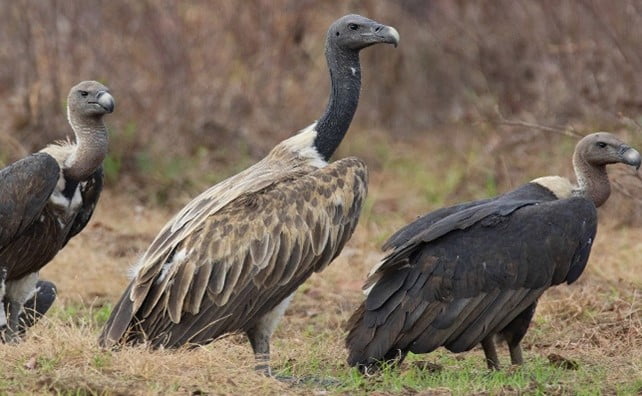Environment & Ecology
Context: Recently the Tamil Nadu Government formed a State-level Committee to set up an institutional framework for the effective conservation of vultures.
- Alarmed at the 96% decline in India’s vulture population between 1993 and 2003, the Central government put into place two action plans to protect the species at the national level: the first in 2006 and the second, ongoing plan for 2020-2025.
- One of the important action points in this nationwide plan is the formation of State-level committees to save the critically endangered population of vultures.
Tamil Nadu is home to four types of Vulture species:
The Oriental white-backed vulture

- It is the most common vulture species in the continent of Africa.
- When it was first assessed in 1988 it was classified as a Least concern species owing to a large range and population.
- It was reassessed from a Least Concern to Near Threatened species in the 2007 IUCN Red List.
- In 2012 it was added to the list of Endangered species.
- In 2015, it was further up listed to Critically Endangered because the decline had reached a magnitude that puts the vulture at an extreme risk of extinction.
The long-billed vulture

- The Indian vulture/long billed vulture is native to India, Pakistan and Nepal.
- It has been listed as Critically Endangered on the IUCN Red List since 2002.
- Indian vultures died of kidney failure caused by diclofenac poisoning. It breeds mainly on hilly crags in central and peninsular India.
- The Indian vulture and the white-romped vulture have suffered a 99%–97% population decrease in Bangladesh, Pakistan and India.
- Diclofenac is a non-steroidal anti-inflammatory drug (NSAID) and when given to working animals it can reduce joint pain and so keep them working for longer.
- The drug is believed to be swallowed by vultures with the flesh of dead cattle who were given diclofenac in their last days of life.
The red-headed vulture

- The red-headed vulture also known as the Asian king vulture, Indian black vulture or Pondicherry vulture is mainly found in the Indian subcontinent, with small populations in some parts of Southeast Asia.
- It has no subspecies.
- Today the range of the red-headed vulture is localized primarily to northern India.
- It was up listed to critically endangered in the 2007 IUCN Red List.
The Egyptian vulture

- The Egyptian vulture also called the white scavenger vulture or pharaoh’s chicken, is only member of the genus Neophron.
- It is widely distributed from the Iberian Peninsula and North Africa to India
- IUCN Red List Status: Endangered.
Conservation Efforts in India:
- Identification and removal of threats near the nesting and roosting sites, making food and water available to them is what needs to be done.
- Understanding their habitat use and their behaviour.
- Vulture Recovery Plan – banning the veterinary use of diclofenac, finding its substitute and set up conservation breeding centres for vultures.
- Action Plan for Vulture Conservation 2020-2025
- PIL filed in Delhi High Court about not banning nimesulide, aceclofenac and ketoprofen which are toxic to the vultures.
- The Centre has formed a committee made up of members from the BNHS and Indian Veterinary Research Institute to formulate a release policy for vultures being bred at the centres.
Source: The Hindu
Previous Year Question
Q.1) Which of the following are detritivores? (2021)
- Earthworms
- Jellyfish
- Millipedes
- Seahorses
- Woodlice
Select the correct answer using the code given below.
- 1, 2 and 4 only
- 2, 3, 4 and 5 only
- 1, 3 and 5 only
- 1, 2, 3, 4 and 5













